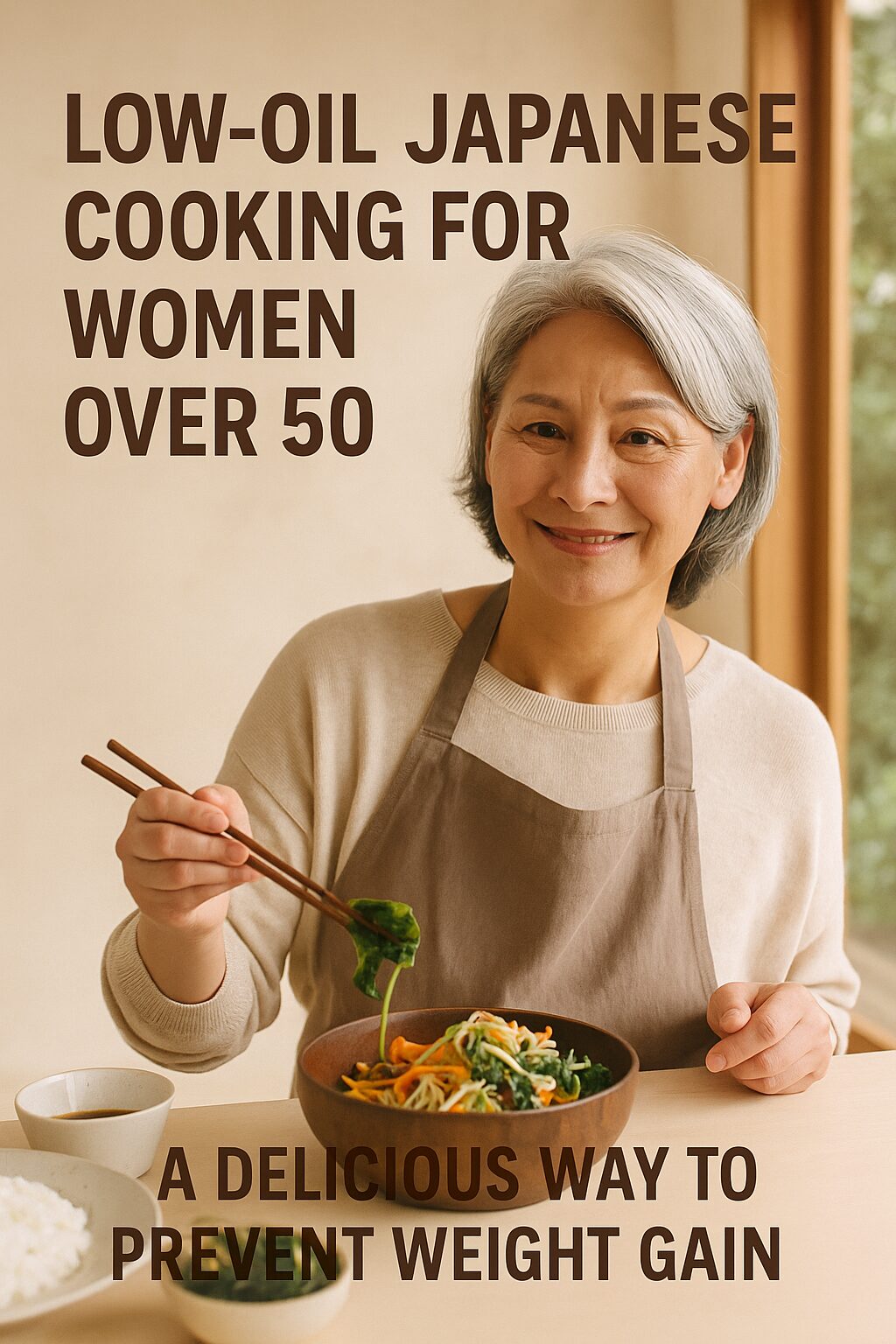As we age, keeping weight in check becomes harder, especially after 50. Hormonal changes, reduced muscle mass, and slower metabolism all play a role. But drastic diets and intense workouts aren’t the only solutions. Cooking methods matter too—and Japanese cuisine offers powerful, low-oil strategies that support a healthy weight without sacrificing taste.
Let’s explore how Japanese cooking traditions can help you enjoy satisfying meals while preventing midlife weight gain.
Discover the Japanese Approach to Balanced Eating
Naturally Low in Oil
Traditional Japanese meals rarely use much oil. Instead of deep-frying or heavy sautéing, home cooks favor steaming, simmering, grilling, or raw preparations. These methods preserve nutrients while avoiding excess calories from fats.
Flavor Without Fat
Rich umami flavors from ingredients like dashi (broth made from kombu seaweed and bonito flakes) and fermented seasonings like miso or soy sauce create depth without oil. As a result, meals feel satisfying even with minimal fat.
Understanding Weight Changes After 50
Hormones and Metabolism Shift
Estrogen declines during menopause, which often leads to increased abdominal fat and a slower metabolism. Combined with less physical activity, it’s easy to gain weight even when eating the same as before.
Cooking Habits Make a Difference
What you eat matters—but how you cook it matters too. Using less oil reduces calorie intake and lowers the burden on your digestive system, which naturally slows with age.
Low-Oil Cooking Techniques from Japanese Home Kitchens
Steam and Simmer
Steaming vegetables, fish, or tofu preserves texture and nutrients without extra fat. Simmering in seasoned broths like miso or soy-based sauces allows ingredients to absorb rich flavors naturally.
Grill Instead of Fry
Grilling fish or lean meats over open flames or in the oven helps excess fat drip away. This method gives you crisp texture and smoky flavor without needing oil.
Use Dashi Broth for Moisture and Flavor
Dashi acts as a base in many Japanese dishes, such as soups, simmered vegetables (nimono), or stews (nabemono). It keeps food moist while delivering umami.
Try making a simple dashi with this basic recipe. It takes only 10 minutes.
Smart Japanese Ingredients That Support Weight Control
Konjac: High Fiber, Zero Fat
Konjac (or shirataki noodles) is a gelatinous food made from yam root. It contains almost no calories but provides fullness and helps digestion. It’s often used in soups or stir-fried with vegetables.
Tofu and Soy Products
Tofu, edamame, and natto offer plant-based protein, which helps maintain muscle mass. These foods are low in fat and promote satiety. Fermented soy products like miso also support gut health.
Seaweed and Vegetables
Seaweed provides iodine, calcium, and minerals with virtually no fat. It’s often added to soups or salads. Daikon, carrots, and leafy greens are lightly simmered or served raw to preserve nutrients.
Read more about the nutritional value of seaweed on the Harvard T.H. Chan School of Public Health website.
Easy Low-Oil Japanese Recipes to Try at Home
Miso Soup with Tofu and Wakame
This comforting soup takes only 10 minutes. Just dissolve miso in hot dashi and add cubes of tofu, chopped scallions, and rehydrated wakame seaweed.
Simmered Kabocha Pumpkin
Simmer kabocha (Japanese pumpkin) with a bit of soy sauce, mirin, and dashi. It becomes tender and sweet without any added oil.
Grilled Salmon with Daikon Oroshi
Grill a piece of salmon and top it with grated daikon radish. Serve with a splash of citrusy ponzu sauce. Light, flavorful, and full of omega-3s.
Shirataki Stir-Fry
Drain and rinse shirataki noodles. Stir-fry them in a nonstick pan with vegetables, tofu, and a bit of soy sauce or sesame paste. No oil needed.
For more ideas, explore low-oil Japanese recipes at NHK World Dining.
Final Thoughts
Preventing weight gain after 50 doesn’t have to feel like a struggle. Traditional Japanese cooking offers flavorful, low-oil meals that nourish your body and satisfy your taste buds. Focus on natural ingredients, gentle cooking methods, and mindful portions.
If you’re looking for additional support for healthy aging, explore our supplement Effisoy, made with fermented soy isoflavones. It reflects the very principles of Japanese wellness and helps maintain balance and energy for women over 50.
A few simple changes in how you cook can make a big difference. Choose flavor, not fat. And enjoy the journey to better health.
Take the benefit of fermented isoflavone of Miso through our supplement
The key ingredient in miso soup, which Japanese people consume daily, is miso (fermented soybean paste). It not only provides plant-based protein but also contains isoflavones that are broken down through fermentation. These isoflavones help regulate hormone balance and are known to offer various health benefits.
Juveriente®’s Effisoy, launched in 2016, based on fermented soy bean germ extract has been loved as a natural menopause relief since its launching in 2016.
Its primary function is to boost the weakened synthesis of a hormone precursor, DHEA. It helps the precursor, DHEA. Rebalancing the precursor will eventually recover your hormones in line with your natural balance. It will help you refresh your various functions for your beauty, including the base metabolism to lose weight.
Here are some of the real product reviews in our Amazon shop.
“Restful sleep finally!!”, “I Am Now Free of Hot Flashes!!”, “Lifesaver”







